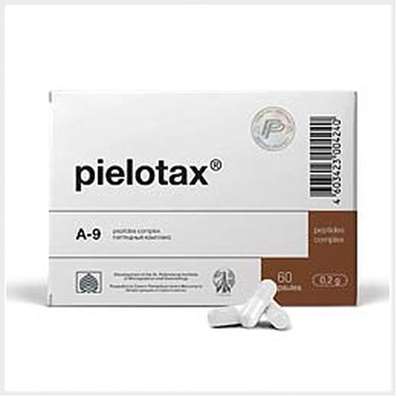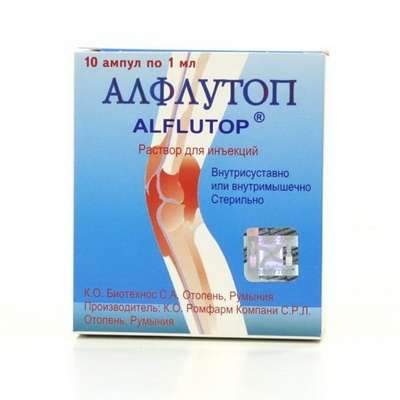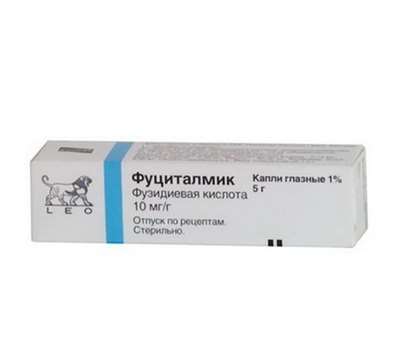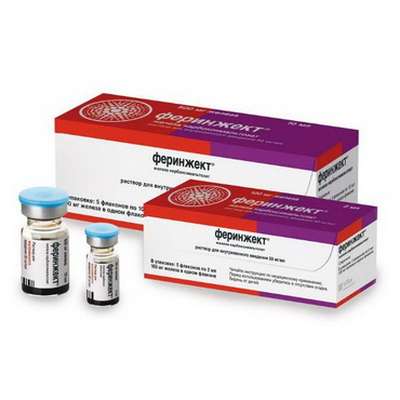Instruction for use: Orniona
I want this, give me price
Active substance: Estriol
À̉Ơ Code: G03CA04 Estriol
Pharmacological groups
Estrogens, gestagens; their homologues and antagonists
Nosological classification (ICD-10)
E28.3 Primary ovarian failure
Hypogonadism of the ovary (primary), Hypofunction of the ovaries, Estrogen deficiency, Insufficient estrogen content in the body, Insufficiency estrogenic, Insufficiency of estrogens, Primary dysfunction of the ovaries, Estrogen-deficient conditions
N90.5 Atrophy of the vulva
Dystrophy of the vulva, Crown of the vulva, Vaginal narrowing
N95.1 menopausal and menopausal status of women
Atrophy of the mucosa of the lower genital tract, caused by estrogen deficiency; Vaginal dryness; Autonomic dysfunction in women; gipoestrogeniya state; Deficiency of estrogen in menopausal women; Degenerative changes of the mucous membrane in the menopause; Natural menopause; an intact uterus; climacteric; Menopause women; Menopause in women; menopausal depression; Climacteric ovarian dysfunction; Menopause; Climacteric neurosis; Menopause; Menopausal symptoms complicated psychovegetative; Climacteric syndrome; Climacteric vegetative disorders; Climacteric psychosomatic disorder; menopausal disorders; Menopausal disorders in women; menopausal condition; Climacteric vascular disorders; Menopause; Menopausal vasomotor symptoms; menopausal period; Lack of estrogen; Feeling the heat; Pathological menopause; perimenopause; menopause; postmenopausal; Premature menopause; premenopauznom period; tides; hot flashes; flushing in the Meno and postmenopausal; Hot flashes / hot flashes in menopause; Heart attack during menopause; Early menopause in women; Disorders of menopause; climacteric syndrome; Vascular complications of menopause; Physiological menopause; Estrogendefitsitnye state; premature Menopause
N95.2 Postmenopausal atrophic vaginitis
Atrofic vulvovaginitis, Vulvovaginitis estrogen-deficient, Atrophied vagina, Atrophic changes in the organs of the urogenital system in women, Atrophy of the mucous membrane of the lower sections of the genito-urinary tract, caused by estrogen deficiency Atrophy of the mucous membranes of the urino-genital organs, Burning and dryness of the vagina, Violation of the composition of the vaginal secretion in menopause, Dryness of the mucous membrane of the vagina, Degenerative disorders of the female sexual sphere, Atrophic vaginitis, Atrophic vulvovaginitis, Atrophy of lower urinary tract, Atrophy of urogenital organs, Dryness of the mucous membranes of the urino-genital organs, Dryness of the mucous membranes of the urogenital tract, Dryness of the vagina
N95.9 Menopausal and perimenopausal disorders, unspecified
Postmenopause, Atrophy of the vulva, Climacteric syndrome, Postmenopausal period, Premenopausal period, Menopausal Symptom
N999 * Diagnosis of diseases of the genitourinary system
Angiography of the kidneys, Research of excretory function of the kidneys, Ultrasound for the detection of acquired uterine cavity changes, Replacement of fistulous catheters, Diagnosis of amenorrhea, Evaluation of kidney function and their visualization, Cystoscopy, Vesicology, Intrauterine diagnostic procedures, Urological catheterization, Retrograde urography, Angiography with urinary tract disease, Ultrasound examination of female genital organs, Instrumental studies of pelvic organs, MRI of pelvic organs, Pyelography, Small gynecological manipulations, Ultrasound examination of the genitourinary system, Excretory urography, Colposcopy, Radiography of the genitourinary system, Cystourethroscopy, Cytology of the cervix, Cystography, Cystourethrography, Magnetic resonance imaging of the kidneys, Enlargement of the urethra, Retrograde pyelography, Urethroscopy, Ultrasound of female genital organs, Angiography of the kidney, Mictional urethrocystography
Z100 * CLASS XXII Surgical practice
Abdominal surgery, adenomectomy, Amputation, Coronary angioplasty, Angioplasty of the carotid arteries, Antiseptic skin treatment for wounds, Antiseptic Hand, Appendectomy, atherectomy, Balloon coronary angioplasty, Vaginal hysterectomy, The coronary bypass, Interventions in the vagina and cervix, Interventions on the bladder, Intervention in the mouth, Restoration and reconstructive surgery, Hand hygiene of medical personnel, Gynecologic surgery, Gynecological intervention, Gynecological surgery, Hypovolemic shock during operations, Disinfection of purulent wounds, Disinfection of wounds edges, Diagnostic intervention, Diagnostic procedures, Cervical Diathermocoagulation, Long-surgery, Replacing the fistula catheters, Infection in orthopedic surgery, Artificial heart valve, cystectomy, Short-term outpatient surgery, Short-term operation, Short surgical procedures, Krikotireotomiya, Blood loss during surgery, Bleeding during surgery and in the postoperative period, Kuldotsentez, laser photocoagulation, laser coagulation, retinal laser coagulation, Laparoscopy, Laparoscopy in Gynecology, CSF fistula, Small gynecological operations, Small surgical procedures, Mastectomy and subsequent plastic, mediastinotomy, Microsurgical operations on the ear, Mukogingivalnye operation, suturing, Minor surgery, neurosurgical operation, Immobilization of the eyeball in ophthalmic surgery, testectomy, pancreatectomy, Perikardektomiya, The period of rehabilitation after surgery, The period of, convalescence after surgery, Percutaneous transluminal coronary angioplasty, Pleural thoracentesis, Pneumonia postoperative and posttraumatic, Preparation for surgical procedures, Preparation for surgery, Preparation of the surgeon's hands before surgery, Preparation of the colon for surgical procedures, Postoperative aspiration pneumonia in neurosurgical and thoracic surgery, Postoperative nausea, Postoperative bleeding, postoperative granuloma, postoperative shock, The early postoperative period, myocardial revascularization, Radiectomy, gastric Resection, bowel resection, uterine Resection, liver Resection, enterectomy, Resection of part of the stomach, Reocclusion of the operated vessel, Bonding tissues during surgical procedures, Removal of sutures, Condition after eye surgery, Condition after surgery, Condition after surgery in the nasal cavity, Condition after gastrectomy, Status after resection of the small intestine, Condition after tonsillectomy, Condition after removal of the duodenum, Condition after phlebectomy, Vascular surgery, Splenectomy, Sterilization of surgical instruments, Sterilization of surgical instruments, sternotomy, Dental surgery, Dental intervention in periodontal tissues, strumectomy, Tonsillectomy, Thoracic surgery, total gastrectomy, Transdermal intravascular coronary angioplasty, Transurethral resection, Turbinektomiya, Removal of a tooth, cataract surgery, Removal of cysts, tonsillectomy, Removal of fibroids, Removing the mobile primary teeth, Removing polyps, Removing broken tooth, Removal of the uterus body, Removal of sutures, Urethrotomy, Fistula likvoroprovodyaschih ways, Frontoetmoidogaymorotomiya, Surgical infection, Surgical treatment of chronic limb ulcersm, Surgery, The surgery in the anal area, The surgery on the colon, Surgical practice, The surgical procedure, Surgical interventions, Surgery on the gastrointestinal tract, Surgical procedures on the urinary tract, Surgical procedures on the urinary system, Surgical intervention of the genitourinary system, Surgical procedures on the heart, Surgical manipulation, surgery, Surgery on the veins, Surgical intervention, Vascular surgery, Surgical treatment of thrombosis, cholecystectomy, Partial gastric resection, transabdominal hysterectomy, Percutaneous transluminal coronary angioplasty, Percutaneous transluminal angioplasty, Coronary artery bypass, tooth Extirpation, Extirpation of milk teeth, pulpectomy, pulsative cardiopulmonary bypass, tooth Extraction, teeth Extraction, cataract extraction, Electrocoagulation, endourological intervention, episiotomy, Etmoidotomiya, Complications after tooth extraction
Z98.8 Other specified poslehirurgicheskie state
Suppurative complications in the postoperative period, Suppurative complications of surgery, Postoperative liver dysfunction, Postoperative vomiting, Postoperative complications, The postoperative period, The early postoperative period
Composition
Cream vaginal 1 g
active substance:
estriol 1 mg
auxiliary substances: glycerol (glycerol) - 120 mg; stearyl alcohol - 88.4 mg; ethanol 95% (ethyl alcohol 95%) - 50 mg; cetyl alcohol - 36.7 mg; macrogol 25 cetostearyl ether - 32.4 mg; cetyl palmitate - 15 mg; sorbitan stearate - 7.6 mg; lactic acid - 4 mg; sodium hydroxide - 1.2 mg; Chlorhexidine dihydrochloride (chlorhexidine hydrochloride) 0.1 mg; purified water - up to 1 g
Description of dosage form
Cream: homogeneous white or almost white, with a weak specific odor.
pharmachologic effect
The pharmacological action is estrogenic.
Pharmacodynamics
Cream Orniona® contains estriol - an analog of the natural female hormone. Estriol is used to correct the deficiency of estrogen in women during pre- and postmenopausal periods. Effective in the treatment of urogenital disorders. In case of atrophy of the epithelium of the vagina and cervix, estriol suppresses these disorders, helps restore normal microflora and physiological pH of the vagina, thereby increasing the resistance of the vaginal epithelium to infectious and inflammatory processes. Unlike other estrogens, estriol interacts with the nuclei of endometrial cells for a short period of time, so that the daily use of the recommended daily dose does not lead to proliferation of the endometrium. Thus, there is no need for cyclic additional administration of progestogens, and in the postmenopausal period there are no bleeding abolition.
Pharmacokinetics
Absorption and distribution. Intravaginal administration of estriol provides optimal local bioavailability of the drug substance. After absorption, estriol also enters the general bloodstream, which is manifested by a rapid increase in the concentration of unconjugated estriol in the blood plasma with a maximum value 1-2 hours after administration. Unlike other estrogens, up to 90% of estriol in the blood plasma binds to albumin, and not to SHBG.
After intravaginal administration of 0.5 mg of Cmax estriol, it is approximately 100 pg / ml in blood plasma, Cmin is about 25 pg / ml, and the average concentration is about 70 pg / ml. After 3 weeks of a daily application of 0.5 mg of vaginal estriol, the mean concentration was reduced to 40 pg / ml.
The metabolism of estriol in the body is reduced to its conjugation and deconjugation during intestinal hepatic recirculation.
Excretion. Since estriol is the final product of metabolism, it is mainly excreted by the kidneys in a conjugated form. Only a small fraction (2%) is excreted through the intestine, mainly in unconjugated form. T1 / 2 is about 6-9 hours.
Readings of the drug ORNIONA®
hormone replacement therapy for the treatment of mucosal atrophy of the lower urinary tract and genital tract, associated with estrogen deficiency in postmenopausal women;
pre- and postoperative therapy in postmenopausal women who have or have already undergone vaginal surgery;
with a diagnostic purpose for unclear results of cytological examination of the cervical epithelium against the background of atrophic changes (as an auxiliary tool).
Contraindications
established hypersensitivity to the active substance or any of the excipients of the drug;
untreated endometrial hyperplasia;
established, history of, or suspected breast cancer;
diagnosed or suspected estrogen-dependent tumors (including endometrial cancer);
bleeding from the vagina of an unclear etiology;
thromboses (venous and arterial) and thromboembolism at present or in the anamnesis (including deep vein thrombosis, pulmonary embolism, myocardial infarction, stroke), cerebrovascular disorders;
conditions preceding thrombosis (including transient ischemic attacks, angina pectoris), at present or in the anamnesis;
congenital or acquired predisposition to the development of arterial or venous thrombosis, incl. deficiency of protein C, protein S or antithrombin III (see "Special instructions");
liver disease in acute stage or liver disease in anamnesis, after which the liver function indicators did not return to normal;
porphyria;
pregnancy;
the period of breastfeeding.
Caution: the presence of any of the following conditions / conditions at present, or in cases where this condition / illness was previously noted and / or worsened during previous pregnancies or previous hormonal treatment - the patient should be under direct medical supervision. It should be borne in mind that these conditions / diseases can recur or worsen during treatment with Orniona®, especially if there are:
- leiomyoma (uterine fibroids) or endometriosis;
- risk factors for the development of arterial or venous thrombosis and thromboembolism;
- risk factors for estrogen-dependent tumors, for example, the first degree of heredity in breast cancer;
- arterial hypertension;
- Benign tumors of the liver (eg adenoma);
- diabetes mellitus with or without angiopathy;
- cholelithiasis;
- Migraine or headache;
- systemic lupus erythematosus;
- Endometrial hyperplasia in the anamnesis;
- epilepsy;
- bronchial asthma;
otosclerosis;
- familial hyperlipoproteinemia;
- pancreatitis.
pregnancy and lactation
The drug Orniona® is intended for use in postmenopausal women. The use of the drug during pregnancy, with suspicion of pregnancy or during breastfeeding is contraindicated.
Side effects
Like any drug applied to the mucous membrane, Orniona® cream can cause local irritation or itching.
Possible acyclic spotting, breakthrough bleeding, metrorrhagia.
In rare cases, tension, tenderness, sensitivity, or enlargement of the mammary glands are possible. As a rule, these side effects disappear after the first weeks of treatment, in addition, they may indicate the appointment of too high a dose of the drug.
Other adverse reactions have been reported that have occurred with estrogen monotherapy or combination therapy with estrogens and progestogens.
From the digestive tract (gastrointestinal tract): nausea.
From the side of the liver and biliary tract: cholelithiasis.
Benign, malignant and unspecified neoplasms (including cysts and polyps): benign and malignant estrogen-dependent neoplasias, incl. cervical cancer, endometrial cancer (see "Contraindications" and "Special instructions").
Mental disorders: dementia at the onset of HRT in continuous mode after age 65 (see "Special instructions").
From the genitals and the breast: increased libido.
From the side of water-electrolyte exchange: fluid retention.
From the skin and subcutaneous tissues: chloasma, erythema multiforme, erythema nodosum, hemorrhagic purpura.
There are data on the development of the risk of breast cancer, ovarian cancer, risk of VTE, the risk of coronary heart disease, the risk of ischemic stroke (see "Special instructions").
Interaction
In clinical practice, there was no interaction between estriol preparations for topical application and other drugs (drug).
Metabolism of estrogens can be enhanced when used in combination with compounds that induce enzymes involved in the metabolism of drugs (especially cytochrome P450 enzymes), such as anticonvulsants (including phenobarbital, phenytoin, carbamazepine), antimicrobial agents (in tons rifampicin, rifabutin, nevirapine, efavirenz, ritonavir, nelfinavir), barbiturates.
Herbal preparations containing St. John's wort (Hypericum perforatum) can induce estrogen metabolism.
Elevated estrogen metabolism can lead to a decrease in their clinical effect.
Estriol enhances the action of lipid-lowering drugs; weakens the effects of male sex hormones, anticoagulants, antidepressants, diuretic, hypotensive, hypoglycemic drugs.
Drugs for general anesthesia, narcotic analgesics, anxiolytics, some antihypertensive drugs, ethanol reduce the effectiveness of Orniona®.
Folic acid and thyroid agents increase the estrogenic effect of estriol.
There is evidence that estrogens, incl. estriol, can enhance the pharmacological action of GCS and increase the activity of suxamethonium, theophylline and oleandomycin.
Dosing and Administration
Intravaginal. Cream Orniona® should be inserted into the vagina before bedtime with a calibrated applicator. 1 dose (when filling the applicator to the ring mark) contains 0.5 g of Orniona® cream, which corresponds to 0.5 mg of estriol.
Cream Orniona® can be used both in women with a history of hysterectomy, and in women with an intact uterus.
When HRT is used to treat atrophy of the mucous membrane of the lower urinary and genital tracts associated with estrogen deficiency in postmenopausal women, 1 intravaginal administration of the cream is performed daily for no more than 2 weeks, until symptoms ease. Further, the dose gradually decreases to maintenance, depending on the clinical picture (for example, 1 administration 2 times a week).
In pre-and post-operative therapy, post-menopausal women who have or have already undergone a vaginal operation will undergo 1 intravenous administration of the cream daily for 2 weeks before surgery; 1 administration 2 times a week for 2 weeks after the operation.
With the diagnostic purpose for unclear results of cytological examination of the cervical epithelium against the background of atrophic changes, 1 intravaginal administration of the cream is performed every other day for 1 week before taking the next smear.
If the next dose of the drug has been missed, you should continue using the drug according to the usual scheme, not replacing the previously missed dose. Do not administer 2 doses of the drug in 1 day.
When initiating or continuing treatment for postmenopausal symptoms, the lowest effective dose should be administered within the shortest period of time.
In women who do not receive drugs for HRT, or are transferred from a continuous intake of oral combination drugs for HRT, treatment with Orniona® can be started any day.
Women who switch from a cyclic regimen of oral medication to HRT should begin treatment with Orniona® 1 week after the withdrawal of these drugs.
The technique of introduction:
- unscrew the cap from the tuba, turn it over and open the tube with a sharp tip;
- Screw the applicator onto the tube;
- squeeze the tube so that the applicator is filled with cream until the piston stops;
- unscrew the applicator from the tube and close the tube with a cap;
- lying on your back, insert the applicator deep into the vagina and smoothly push out the entire contents of the applicator with the piston;
- after using the applicator, remove the piston from the body and wash the piston and the applicator body in warm water with soap. Do not use synthetic detergents for this purpose. After washing, rinse the applicator with warm, warm boiled water.
Do not put the applicator in hot water or boiling water.
Overdose
With intravaginal injection, the probability of an overdose of the cream is small.
Symptoms: with accidental ingestion - nausea, vomiting, vaginal bleeding, headache.
Treatment: there is no specific antidote. If necessary, symptomatic therapy should be given.
special instructions
Atrophy of the lower urinary tract mucosa due to estrogen deficiency can be manifested by unpleasant sensations in the vagina (pain during intercourse, dryness in the vagina, pruritus) and micturition disorders (increased frequency of urination, dysuria, incontinence of mild urine).
For the treatment of postmenopausal symptoms, HRT should be started only with regard to symptoms that adversely affect the quality of life. In all cases, a careful assessment of the risks and benefits of treatment should be carried out at least once a year. HRT should only be continued for a period of time when the benefit exceeds the risk.
There is limited evidence of increased risk in HRT during treatment of premature menopause. In view of the low absolute risk in younger women, the benefit-risk ratio is more favorable for them than for the elderly.
Medical Examination / Surveillance
Before starting or resuming HRT, you need to collect a detailed individual and family history. Based on anamnesis, contraindications and warnings on the use of the drug, it is necessary to conduct a clinical examination, including examination of the pelvic organs and mammary glands.
During treatment it is recommended to conduct general medical and gynecological examination, including breast examination. The frequency and nature of the surveys are individual, but not less than once a year. Women should be informed of the need to inform the doctor about changes in the mammary glands. Studies, including appropriate imaging techniques, such as mammography, should be performed in accordance with generally accepted survey standards and, depending on each case.
Therapy should be discontinued if there is a contraindication and / or if the following conditions / diseases occur:
- jaundice and / or worsening of liver function;
- a significant increase in blood pressure;
- occurrence or resumption of a migraine headache
- Pregnancy.
Endometrial hyperplasia and endometrial cancer
To prevent endometrial stimulation, the daily dose of Orniona® should not exceed 1 administration (0.5 mg of estriol), and this dose should not be applied daily for more than 4 weeks in a row. Vaginal bleeding in all cases requires examination. The patient should be informed of the need to contact the doctor in case of the onset of vaginal bleeding.
Mammary cancer
HRT may increase mammographic density. This can complicate the radiographic diagnosis of breast cancer. Clinical studies have shown that the probability of an increase in mammographic density is lower in women receiving estriol than in women receiving treatment with other estrogens.
Generalized data suggest an increased risk of developing breast cancer in women receiving combination therapy with estrogens and progestogens and, possibly, estrogen monotherapy.
In women receiving combined therapy with estrogens and progestogens for more than 5 years, an increase in the risk of breast cancer has been doubled.
With monotherapy with estrogens, the increased risk of developing breast cancer is significantly lower than when combined with progestogens. The level of risk depends on the duration of HRT.
Ovarian Cancer
Ovarian cancer is much less common than breast cancer. Prolonged monotherapy with estrogen (at least 5-10 years) was associated with a slight increase in the risk of ovarian cancer. The results of some studies indicate that combined HRT may increase the risk of ovarian cancer in a similar way or slightly. It is not known whether the risk with long-term administration of low-dose estrogen (including Orniona®) is different from that with monotherapy with other estrogens.
VTE (venous thromboembolism)
HRT is associated with an increased risk of developing VTE, i.e. deep vein thrombosis or pulmonary embolism, in 1,3-3 times. The probability of developing VTE during the first year of HRT use is higher than in later terms. With regard to the drug Orniona®, such a risk is unknown.
In patients with a congenital or acquired predisposition to the development of arterial or venous thrombosis, the risk of VTE is high, and HRT may additionally increase it. In this regard, such patients are contraindicated in HRT (see "Contraindications").
The most commonly recognized risk factors for VTE are estrogen intake, advanced age, extensive surgical interventions, long-term immobilization, obesity (BMI over 30 kg / m2), pregnancy / postpartum period, systemic lupus erythematosus and cancer. There is no consensus on the possible role of varicose veins in the development of VTE. After any surgical intervention, VTE should be prevented. If prolonged immobilization is associated with a planned operation, it is necessary to temporarily cancel HRT 4-6 weeks before the operation. Treatment should be resumed after the patient starts walking.
For patients who are already receiving anticoagulant treatment, careful consideration of the HRT benefit-risk ratio is required.
If Orniona® is prescribed as a pre- and post-operative treatment, thrombosis prophylaxis should be considered.
In the absence of a VTE in the patient's history, but in the presence of thrombosis at a young age in her immediate family, the patient can be offered a screening test, after having discussed all of its limitations (screening reveals only a number of hemostasis disorders). If a hemostatic defect is found that does not correspond to the disease in relatives, or if a severe defect is found (including a deficiency of antithrombin III, protein S or protein C, or a combination of these defects), HRT is contraindicated.
If after the start of treatment with Orniona®, VTE develops, then treatment should be stopped. The patient should be informed of the need to seek immediate medical attention if she feels any signs of VTE (including painful swelling of the lower limb, sudden chest pain, shortness of breath).
IHD (ischemic heart disease)
In randomized controlled trials, no results have been obtained that would indicate that combination therapy with estrogens and progestogens and estrogen monotherapy can prevent the development of myocardial infarction in women with or without IHD.
According to randomized controlled trials, in patients with a deleted uterus, the risk of CHD with estrogen alone did not increase.
The risk of IHD increases somewhat with combined HRT estrogens and progestogens in patients older than 60 years.
Ischemic stroke
Combined therapy with estrogens and progestogens and monotherapy with estrogen are associated with an increased risk of ischemic stroke by a factor of 1.5. The relative risk does not change with age and time after menopause. However, the initial risk of stroke depends more on age, and the overall risk of stroke with HRT increases with age.
The risk of hemorrhagic stroke with HRT is not increased.
Other states
Estrogens can cause fluid retention, so patients with impaired renal function and cardiovascular failure should be under close medical supervision.
With the initial hypertriglyceridemia, the triglyceride concentration in the blood plasma against the background of HRT may increase, as a result of which development of pancreatitis is possible.
Estriol is a weak inhibitor of gonadotropin and has no other significant effects on the endocrine system.
HRT does not improve cognitive function. A certificate of an increased risk of developing dementia in patients who started using combined therapy or monotherapy in continuous mode after 65 years of age has been obtained.
In the presence of vaginal infections, concomitant specific treatment is recommended.
The composition of the drug Orniona® includes cetyl and stearyl alcohol, which can cause local skin reactions (including contact dermatitis).
Influence on the ability to drive vehicles and work with machinery. Estriol does not affect the coordination of movements, concentration of attention and the ability to drive vehicles and other mechanisms.
Form of issue
The cream is vaginal, 0,1%. In tubes of aluminum, 15 or 30 g. Each tube together with the applicator is placed in a pack of cardboard.
Conditions of leave from pharmacies
Without recipe.
storage Conditions
At a temperature of no higher than 25 ° C.
Keep out of the reach of children.
Shelf life of ORNIONA®
2 years.
Do not use after the expiry date printed on the package.

 Cart
Cart





